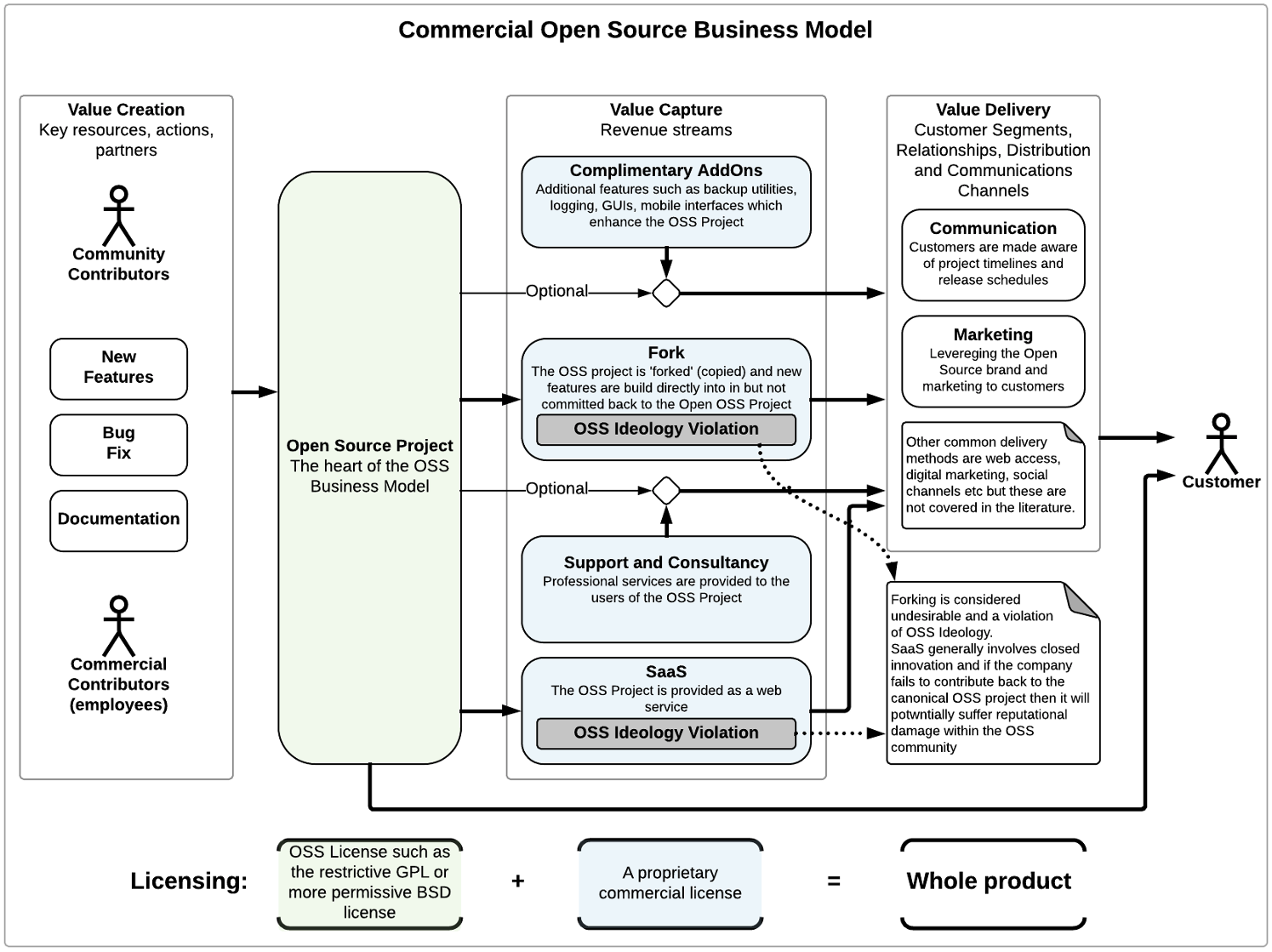Innovation within Open Source projects
Innovation is a core motivation for Snapfix adoption of an open source strategy1. Innovation is defined as “the change of organizational practices and the acquisition or construction of technology artefacts” (Avgerou, 2003, p. 2)2. A large portion of the IP contained within commercial OSS whole products resides within the OSS portion and therefore, Innovation in Commercial OSS is by and large Open Innovation which involves internal and external collaboration and sharing of ideas. The most effective way to analyse Open Source effect on Open Innovation is through the lens of the Open Source business model3 by considering Value Creation, Value Delivery and Value Capture43 which are illustrated in the figure below and discussed in the next three blog posts:

-
Andersen-Gott, M., Ghinea, G., Bygstad, B., 2012. Why do commercial companies contribute to open source software? Int. J. Inf. Manag. 32, 106–117. https://doi.org/10.1016/j.ijinfomgt.2011.10.003 ↩︎
-
Avgerou, C., 2003. The Link between ICT and Economic Growth in the Discourse of Development, in: Korpela, M., Montealegre, R., Poulymenakou, A. (Eds.), Organizational Information Systems in the Context of Globalization: IFIP TC8 & TC9 / WG8.2 & WG9.4 Working Conference on Information Systems Perspectives and Challenges in the Context of Globalization June 15–17, 2003, Athens, Greece, IFIP — The International Federation for Information Processing. Springer US, Boston, MA, pp. 373–386. https://doi.org/10.1007/978-0-387-35695-2_23 ↩︎
-
West, J., Gallagher, S., 2005. (PDF) Patterns of open innovation in Open Source software [WWW Document]. ResearchGate. URL https://www.researchgate.net/publication/228397802_Patterns_of_open_innovation_in_Open_Source_software (accessed 12.11.18). ↩︎
-
Teece, D.J., 2010. Business Models, Business Strategy and Innovation. Long Range Plann., Business Models 43, 172–194. https://doi.org/10.1016/j.lrp.2009.07.003 ↩︎
